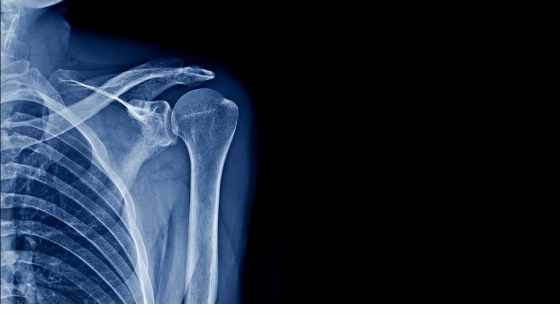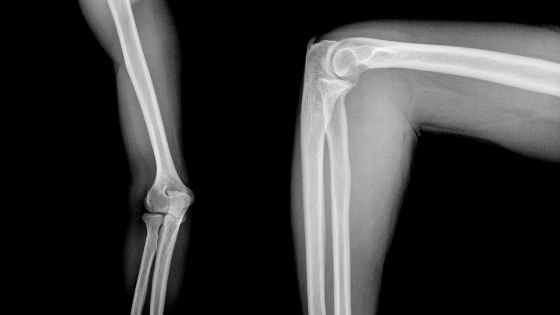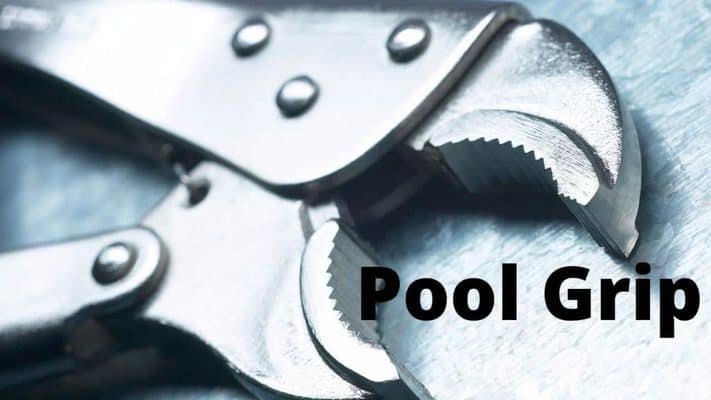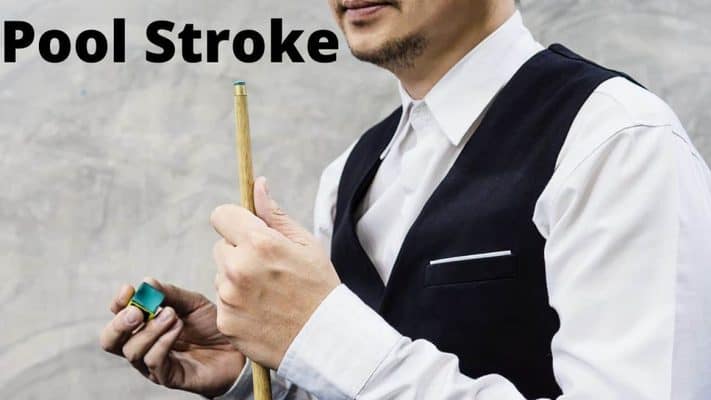The Best Arm Position.
In this article, we are talking about one of the two arm positions which drive and guide the movement of the pool cue. This can be left or right arm.
The best arm position in pool is one where the forearm hangs down from the elbow at a 90 degree angle to the cue. This gives the best position for the free movement of the cue along a straight plane. We are talking about the hand which grips the cue at the butt end.
Why Is This Arm Position The Best?
For the cue to move straight there needs to be as few muscles activated as possible. When your arm is in the backswing position behind the 90 angle, all that is needed to move the arm forward is a release of muscles and gravity. It is a simple alignment, which if taught to a beginner will speed up their improvement.
Attach a weight to a string in a fixed position. Pull the weight back to a predetermined location and then release the weight. The arc made by the weight will be the same each time. Also the higher the weight is located prior to its release, the further the weight will travel down the arc.
The arc will be predictable. The weight represents your cue stick and the string represents your forearm.
The Bottom of the Pendulum.
In the above position as the weight reaches a position just before the bottom of the pendulum swing its movement becomes more aligned to the desired plane of the cue action. This movement remains linear for a few inches in front of the vertical.
This is a section of the arc where the movement best suits the forward movement of the cue. In this position, which is perpendicular to the elbow, the cue reaches maximum acceleration.
If the vertical arm position coincides with the striking of the cue ball, the cue will be traveling at optimum speed.
How do I Achieve this Arm Position?
With your elbow raised the forearm will naturally take up a perpendicular hanging position in relation to the table and floor. If all of the arm muscles are relaxed, the hand will hang straight down due to gravity .
Any fully grown teenager should be able to achieve this position. Those that are not tall enough will find another way that works for them. Children who start to play at a very young age cannot achieve this “natural position,” some will persevere but many will give up.
Do Other Arm Positions Work?
The short answer to this question is a definite yes.
There have been many great players with arms inside or outside of the vertical position.
From Professional Pool:
Keith McCreedy.
Django Bustamante.
From Professional Snooker:
Ray Reardon.
Joe Swail.
Notwithstanding the fact that these are great world champions, the amount of play required to perfect these actions is beyond the scope of most players. Their timing and precision have been honed through hundreds or thousands of hours of intense practice.
Learning to play like this is impossible for most of us.
These styles are therefore not the type of arm positions to teach beginner players.
When it comes to the stroke, a natural hanging position that uses the fewest muscles is the most desirable. The more muscles that are involved in any movement the more chances there are of mistakes creeping onto the stroke.
The Wrist Joint.
The wrist joint is a synovial joint which basically means that it can move in any plane up and down, side to side. The wrist joint moves really well in just about any direction in fact the wrist can make a circular motion. The wrist was probably evolved to grip, climb and swing rather than rock in one particular plane i.e. front to back as we need in pool.
The wrist position in the pool stroke should remain neutral throughout.
With the arm hanging down the wrist needs to hang naturally, relaxed, neither inward or outward. This alignment should be maintained throughout the “set, pause, finish” arm locations. Moving the arm backward and forward should not change the wrist angle or lead to grip tension.
The wrist should hang below the elbow, in line with the player’s head, when viewed from the front.
The Elbow Joint.
The elbow is a hinge joint. It is perfect for the forward and back movement needed to keep the cue in a straight line.
Some coaches say that you shouldn’t drop the elbow when following through whilst others encourage it. Dropping the elbow is a natural result of the follow-through cue action. Instead of stopping the hand abruptly at the chest, the hand continues to move forward as the elbow drops.
Although it appears that the elbow is “dropping” it is more to do with the shoulder joint.
The elbow should be behind the head as viewed from the front of the player.

The Shoulder Joint.
The shoulder is a ball and socket joint which can twist and rotate in many different planes. Because of this the shoulder joint is best locked into place in one plane.
So long as the shoulder remains in the same vertical plane it will not cause the cue to move offline.
The shoulder should ideally be behind the head when viewed from the front position.
Sometimes the shoulder is positioned slightly to one side to help eye alignment in players such as:
Jason Shaw (left-handed & right eyed)
Albin Ouschan (right-handed & left eyed)
They both have their cue running under their eye which is closest to the center of the body. This demands a different shoulder position but does not affect play.



